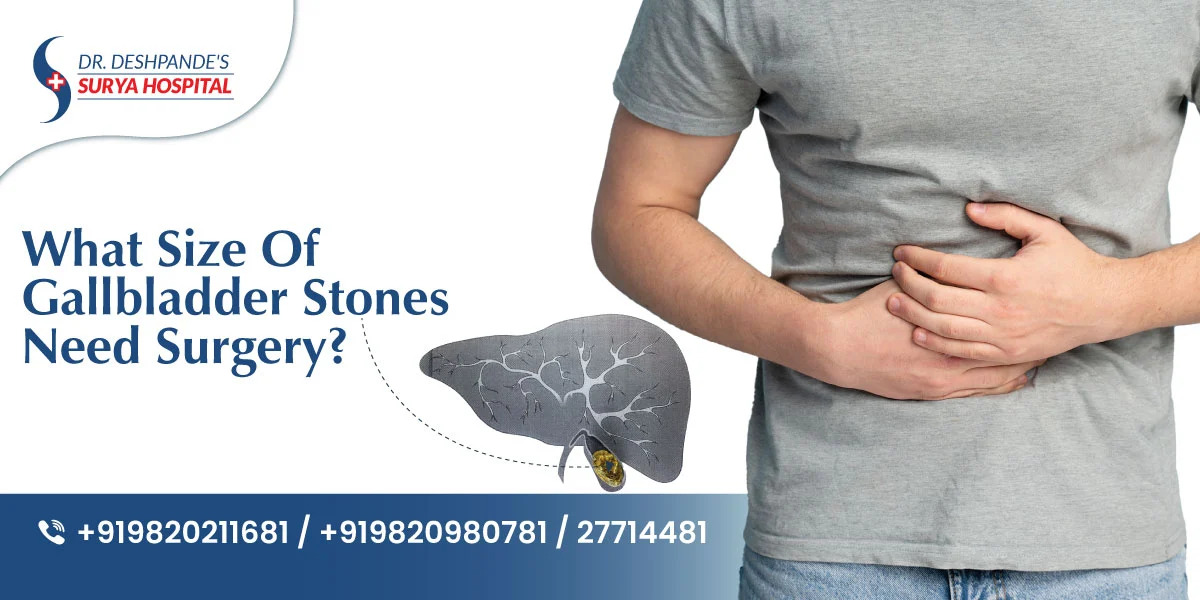Are you having abdominal pain and discovered gallstones in your ultrasound report? You might be hesitant to know when the size of these stones would necessitate an operation. The fact that small stones can be usually handled conservatively does not mean that large stones can be treated in the same manner if left untreated. This article gives an insight into the various size limits for gallbladder stone surgery by top surgeons from the leading general Gall Bladder Doctor in Navi Mumbai.
Signs and symptoms of gallbladder stones
Gallbladder stones are either harmless or can result in symptoms ranging from mild to severe such as pain. Some of the common symptoms are the pain in the upper right abdomen, nausea or vomiting, fever and in some cases jaundice. The symptoms are mainly periodic, but they get worse when they eat fatty food. There is no end to the pain that should be urged to a doctor, if the person still feels pain.
Ultrasound diagnosis and stone size measurement
An abdominal ultrasound is usually the first test done if gallbladder issues are suspected. It provides images of the organ and detects the presence, number, and measurements of any stones present. Stone size is an important factor surgeon at hospitals like Gall Bladder Surgery hospital in Nerul consider for deciding between non-surgical and surgical options.
Nonsurgical management for small stones
For asymptomatic stones under 10mm, doctors may advise lifestyle changes and pain medications for relief. Very small stones have a 30-50% chance of passing naturally through bile or surgical interventions like lithotripsy being low risk. Larger asymptomatic stones require closer monitoring for complications or eventual surgery.
When do stones require surgery?
Stones of 10mm and above are dangerous as they may result in the blocking of the cystic duct and inflammation of the gallbladder (cholecystitis). Surgery is the option in case of the stones, which in size are greater than 15-20 mm or even when there is a presence of symptoms despite taking the medication.
Surgical removal of the gallbladder
The main keyhole cholecystectomy, which is the surgery that is always performed by the best surgeons, is the laparoscopic or the keyhole type. A few tiny cuts are made to let an endoscope and instruments enter, which then disconnects and removes the gallbladder in about 45-90 minutes. It is a surgery for an outpatient with less than a week recovery from it, which results in very little scarring and the pain after the surgery is very low in comparison to the surgery that requires a hospital stay.
Post-surgery lifestyle changes
After cholecystectomy, dietary modifications are necessary as the liver solely takes over fat digestion. A low-fat diet for 6-8 weeks aids healing while letting the liver adjust without stones. Lifelong care should be taken to avoid greasy, spicy foods that can cause diarrhea or indigestion. Multivitamins supplement nutrients from missing absorption in the small intestine.
Conclusion
Gallbladder stone size plays a key role in treatment decisions made carefully by surgeons. While tiny asymptomatic stones can often be safely monitored, those over 15mm typically need cholecystectomy for relief at hospitals in Nerul like GallBladder Surgery hospital. Seeing an expert general surgeon sooner guides the best course of action. Following postoperative diet and lifestyle guidelines also promotes healthy liver functioning long-term after gallbladder removal surgery.








